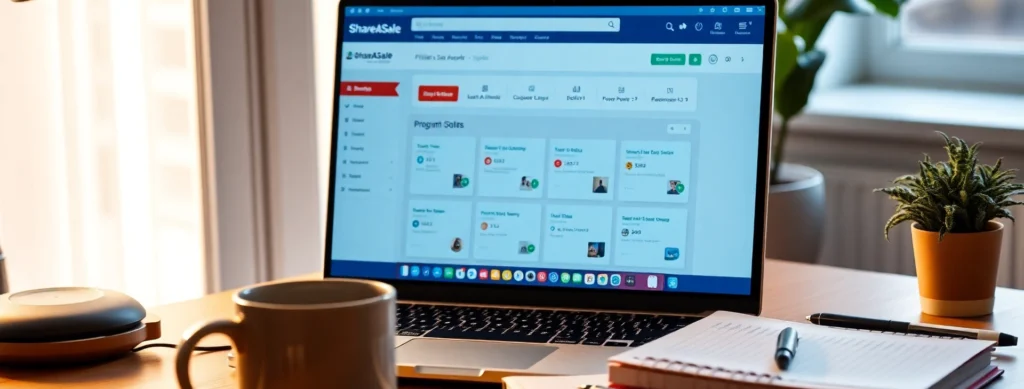
Affiliate marketing is one of the most popular and effective ways bloggers can monetize their sites. Whether you’re just starting out or looking to diversify your income streams, learning how to leverage affiliate marketing can turn your blog into a sustainable source of revenue. Unlike traditional monetization methods, affiliate marketing allows you to earn money by recommending products or services you already trust — making it both authentic and profitable.
Affiliate Disclaimer: This post may contain affiliate links, which means if you make a purchase through my links, I may earn a small commission at no extra cost to you. I only recommend products and services I genuinely use and love.
What is Affiliate Marketing?
Affiliate marketing involves promoting products or services from other companies and earning a commission for every sale, lead, or action generated through your unique referral link. It’s a win-win: companies gain more customers through your promotion, and you earn money without having to develop or manage products yourself.
Affiliate marketing is not about pushing every product to your audience. Instead, it’s about aligning recommendations with your blog’s niche and providing genuine value. Done correctly, it builds trust, supports your readers’ needs, and creates a steady revenue stream.
Why Affiliate Marketing is Great for Bloggers
- Passive Income: Once your affiliate links are integrated into content, they can continue generating revenue 24/7, even while you sleep or focus on creating new posts.
- No Inventory Needed: You don’t need to create products, manage shipping, or handle customer service — the company you promote handles that.
- Flexible & Scalable: Affiliate marketing can grow with your blog. Promote products that match your niche and audience interests, experiment with different offers, and expand your strategy as your traffic increases.
- Trust-Building Opportunity: When you recommend products you genuinely use or believe in, it enhances your credibility with your audience and encourages long-term engagement.
- Low Barrier to Entry: You can start affiliate marketing with minimal upfront costs, making it accessible for bloggers at any stage.
Step-by-Step Guide to Affiliate Marketing for Bloggers in 2025
Affiliate marketing is a powerful way to monetize your blog. This guide walks you through the essential steps to get started — from choosing programs to optimizing your content for conversions.
1. Choose the Right Affiliate Programs
Start by selecting programs that align with your niche and audience. Consider:
- Amazon Associates – Wide product selection, beginner-friendly.
- ShareASale – Offers thousands of merchants in various niches.
- CJ Affiliate – Great for bloggers looking for established brands.
- Niche-specific programs – Many SaaS tools, subscription services, and lifestyle brands offer affiliate programs directly.
Tips:
- Promote products you actually use or trust.
- Check commission rates and cookie duration (longer is better).
- Review program terms to ensure compliance with your content strategy.
2. Integrate Affiliate Links Naturally
Affiliate links should feel like part of your content, not an obvious sales pitch. Ways to integrate links:
- Product reviews or round-ups.
- Tutorials or “how-to” guides using the product.
- Resource pages with recommended tools.
- Blog posts that solve a specific problem (e.g., “Best Tools for Freelance Writers in 2025”).
Pro Tip: Avoid excessive linking; focus on quality over quantity.
3. Create High-Quality, Valuable Content
The best affiliate marketing happens in content that helps your audience. Your posts should:
- Solve a problem or answer a question.
- Include detailed explanations and examples.
- Incorporate images, screenshots, or videos to demonstrate products.
Example: A post titled “Top 10 Email Marketing Tools for Bloggers” with links to MailerLite, ConvertKit, or Flodesk can generate clicks and conversions naturally.
4. Use Calls-to-Action Strategically
Encourage readers to take action without being pushy. Techniques:
- Buttons like “Get the Tool Here” or “Try for Free.”
- Inline text links within valuable advice.
- Lead magnets with an affiliate offer included.
Tip: Make it clear what readers will gain by clicking your link.
5. Track Performance
Monitor which links and content generate clicks and sales:
- Google Analytics 4 – Track traffic sources and conversions.
- Affiliate dashboards – Most programs provide detailed reporting.
- UTM parameters – Use them to track links across campaigns.
Adjust strategy based on performance data for maximum ROI.
6. Disclose Affiliate Relationships
Transparency builds trust and is legally required in many countries:
- Include a disclosure at the top of posts or within content.
- Example: “Some links in this post are affiliate links. If you make a purchase, I may earn a commission at no extra cost to you.”
Check FTC guidelines for compliant disclosures.
7. Optimize and Scale
Once you have a few posts performing well:
- Refresh content with updated links or new products.
- Create related posts to capture more audience interest.
- Experiment with multiple programs to see which performs best.
- Use email marketing to promote high-converting posts to your subscribers.
Recommended Tools:
- Canva – Create compelling visuals for blog and social posts.
- Surfer SEO – Optimize content for search engines and affiliate keywords.
- Answer the Public – Find trending questions to target in your posts.
By following these steps, even beginners can start generating affiliate revenue in 2025. Focus on value-driven content, transparency, and consistent tracking for sustainable results.
Tips for Success in Affiliate Marketing
- Focus on products that your audience genuinely needs.
- Use tracking tools to analyze which links perform best.
- Avoid overloading your site with too many affiliate links to maintain credibility.
Common Affiliate Marketing Mistakes to Avoid
- Promoting unrelated products just for commissions.
- Not disclosing affiliate links — this can harm trust and is required by law.
- Ignoring SEO and content quality.
Tools to Boost Your Affiliate Marketing Efforts
- ThirstyAffiliates or Pretty Links for managing affiliate URLs.
- Google Analytics for tracking traffic and conversions.
- Canva to create eye-catching graphics for product promotions.
FAQ
What is affiliate marketing for bloggers?
Affiliate marketing lets bloggers earn commissions by promoting products or services through special referral links.
How do I find good affiliate programs?
Start with well-known affiliate networks like Amazon Associates, ShareASale, and CJ Affiliate, or check if brands in your niche offer direct affiliate programs.
Can affiliate marketing generate passive income?
Yes! Once your links are set up in valuable content, they can earn commissions over time without ongoing work.
How should I disclose affiliate links?
Include a clear disclaimer on your site or near affiliate links, such as: “This post contains affiliate links. If you make a purchase through these links, I may earn a commission at no extra cost to you.”
Are there legal requirements for affiliate marketing in the U.S.?
Yes, the FTC requires transparent disclosure of affiliate relationships to protect consumers.
How do I avoid affiliate link clutter?
Be selective about the products you promote and integrate links naturally within relevant content.
Can affiliate marketing harm my blog’s SEO?
If done ethically and with high-quality content, affiliate marketing should not harm SEO. Avoid spammy link tactics.
Where can I learn more about affiliate marketing?
Check out reputable blogs like Smart Passive Income or Neil Patel’s blog.

